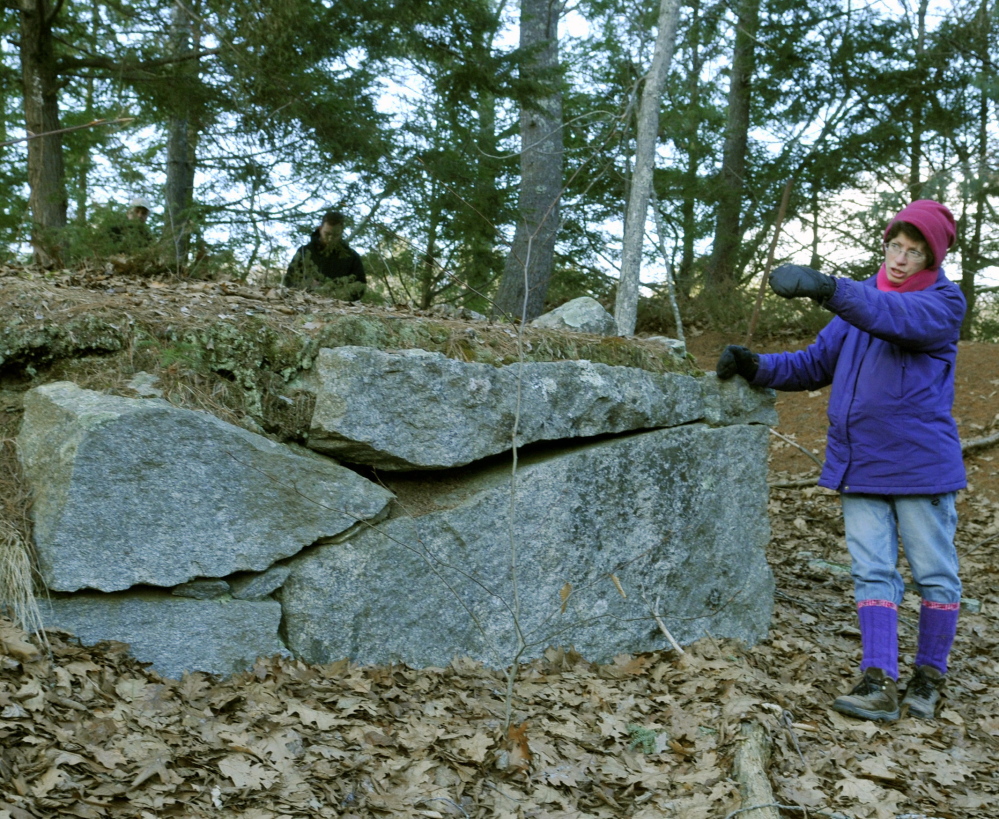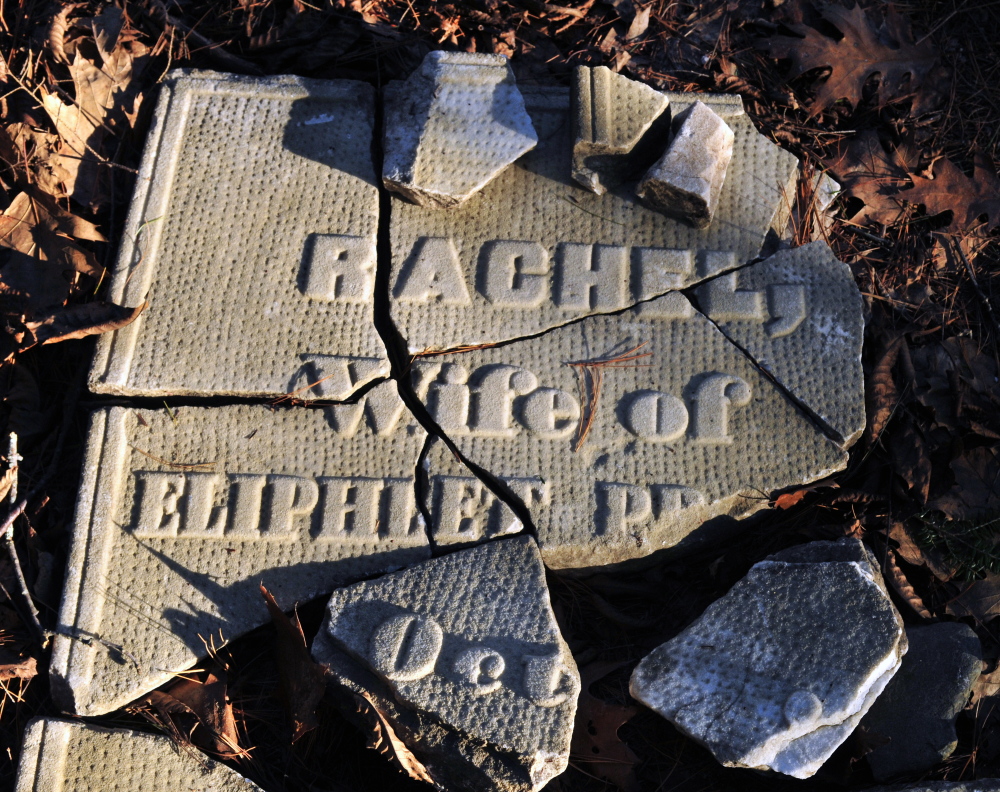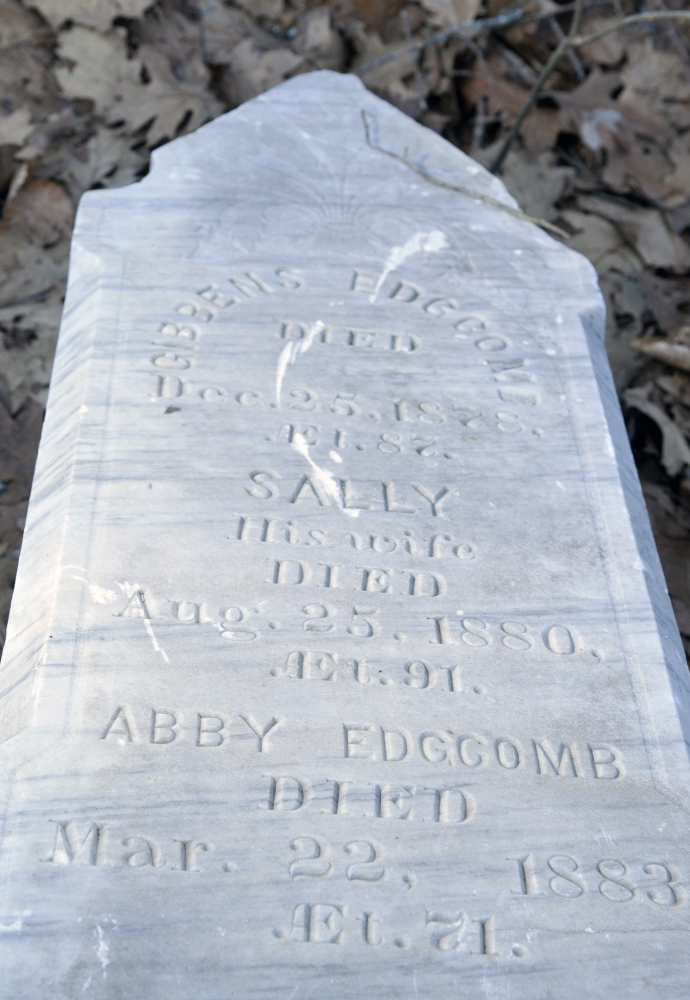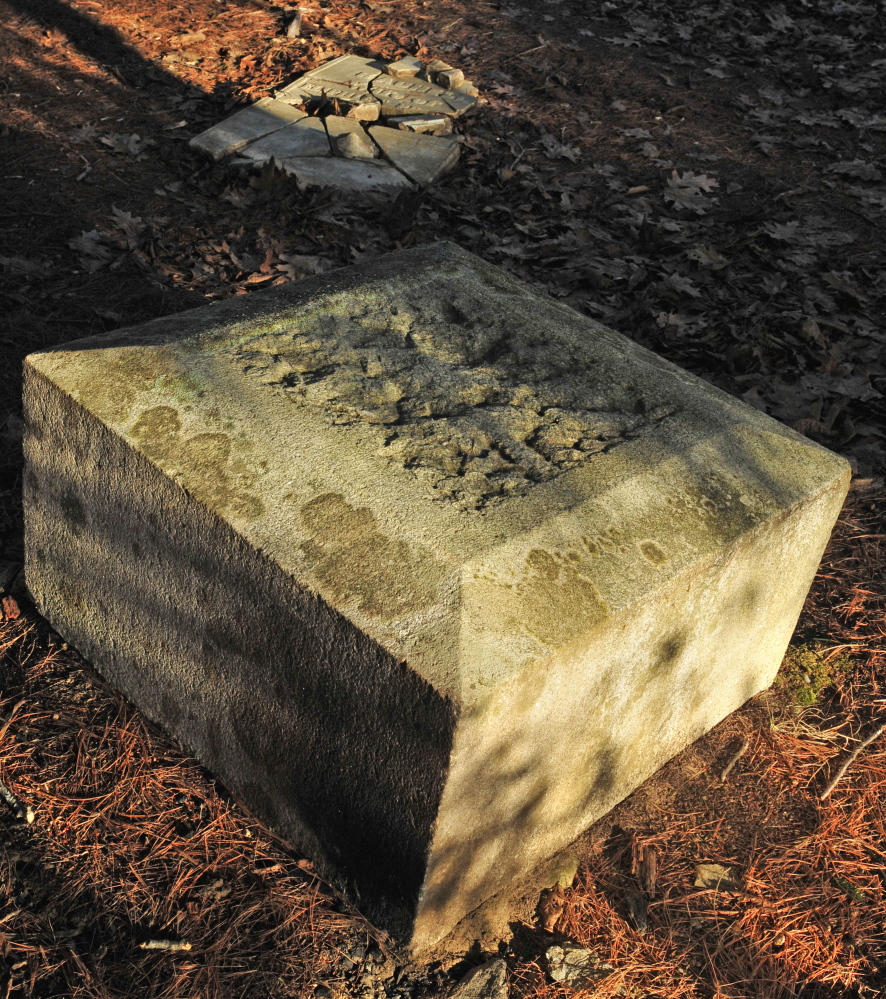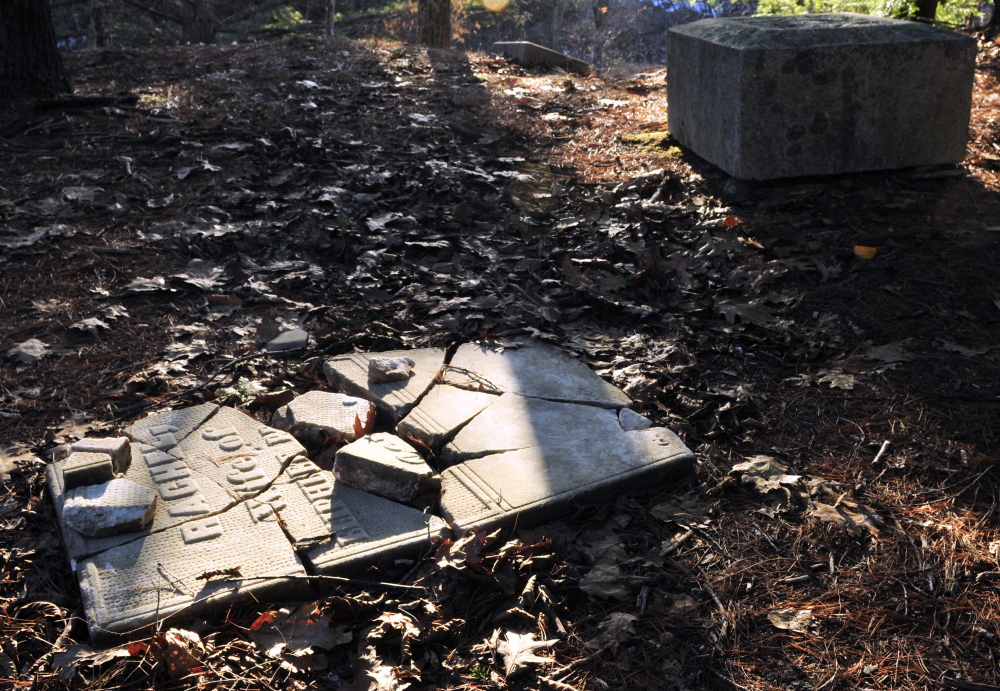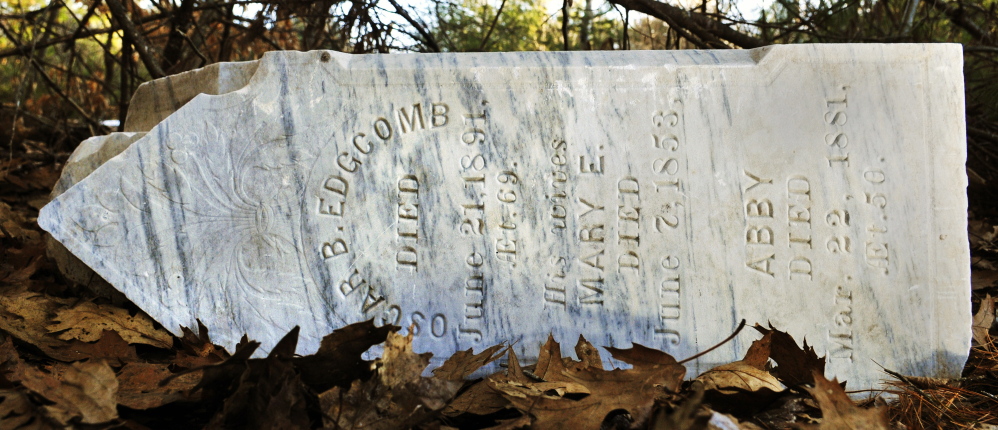GARDINER — In the middle of a gravel pit less than a mile off Route 201 lies a small hill with gravestones for about a dozen family members buried more than a century ago.
There isn’t much left of the graveyard. One headstone has been smashed into more than a dozen pieces and the other marker – a four-sided pillar with 10 names – has been knocked off its granite base down the hill.
The corner of the pillar’s base is charred from fires lit next to it.
The Kennebec Journal published a story in 1977 about a man who fixed up the burial site, putting the pillar back on its base, but the site has been neglected in the decades since and some of those fixes have disappeared.
A couple of area residents recently rediscovered the site and hope something can be done to restore it.
“I’d just like to see it brought back the way it should be,” said George Trask, who lives nearby on Libby Hill Road. “It may be trivial to some people, but those are our forefathers, and those are the ones that built this city.”
Trask said he heard from another resident who has lived in Gardiner for decades that up to 30 people lived in the Edgecomb family’s homestead at one point. The house is now gone, and the gravel pit dug out around the burial site is owned by Drilling & Blasting Rock Specialists.
Trask told the city about the cemetery after finding it last summer, and the public works department plans on visiting the site in the spring.
Because it appears two people buried there were veterans, the city is required by state law to ensure the grave site is maintained.
The 1977 Kennebec Journal article mentions the gravestone of Gibbens Edgecomb, who died in Plattsburg, New York, in 1814 at the age of 98, but the marker is no longer there. A low fence installed by the residents who fixed up the burial site in the 1970s is also gone.
Edgecomb was a veteran of the Revolutionary War, according to Anne Cough, a Gardiner resident who has researched the history of the burial site. The other veteran was another Gibbens Edgecomb, who died in 1878 at the age of 87 and served in the War of 1812, Cough said.
Cough said she hopes the city can help restore the cemetery.
Before residents fixed up the site in 1977, the article said the only recent visitors to the site had been “beer-drinking vandals who have littered the burial site and knocked over the monument bearing the names of the family members buried there.”
State law didn’t require people to tell anyone about opening a cemetery until the 1830s. Even then, residents just had to register it with the municipality or county, Shaw said. It wasn’t until 1937 that the state began requiring cemeteries to be opened by cemetery associations, churches, other corporations or families, she said.
State law governing the care of cemeteries has changed in the last two years. The Legislature passed a bill in 2013 that set strict requirements for the care of grave sites of veterans, but the law was heavily amended the following year because it would have been too costly for municipalities, said Eric Conrad, spokesman for the Maine Municipal Association.
The current law requires municipalities to keep all veterans’ graves, headstones, monuments and markers in good condition. For grave sites in public cemeteries, municipalities are required to keep grass suitably cut and trimmed, keep flat grave markers free of grass and debris, and keep the burial places free of fallen trees, branches, vines and weeds.
Send questions/comments to the editors.

